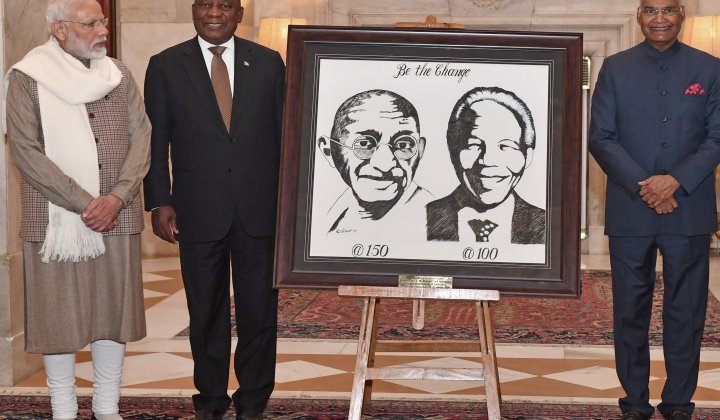As consumers, it’s taken us almost 10 years to fully adapt to companies like Airbnb (launched in 2008) and Uber (launched in 2009). Back then, those business models seemed so foreign that most people were sceptical of their traction, not to mention success. Today, car manufacturers openly talk about the future of digital mobility: a prediction that by mid-century, car ownership will seem ludicrously outdated and inefficient.
Unusual and non-traditional revenue streams won’t seem counter-intuitive for very long...
The same applies to the hospitality industry. The Accor and Marriot hotel groups have both pivoted their business models to include Airbnb-type home sharing options, as part of their product and service offerings. The business boundaries have blurred and will continue to, so the old adage of “if you can’t beat them, join them”, now becomes part of a company’s business strategy.
In 2009, another small blip appeared on the fashion retail radar in the form of Rent the Runway. The concept was nothing new: clothing rental for special occasions, like hiring a tuxedo or an evening gown for an event. Rent the Runway, however, digitised the service and included designer labels for rental. For example, offering must-have, designer handbags as rental options.
Ten years later, the company has over 10 million customers on its database with an annual revenue of over $100 million and a valuation of around $800 million. Not only have they grown exponentially in the last decade, but now more and more commercial brands like GAP, Levi’s and J.Crew are offering their inventory to be rented out, alongside their traditional retail model of ownership. Five years ago this would have been seen as an illogical business model, as these companies would be cannibalising their revenue stream in favour of a transient ownership model. But the consumer mindset is changing fast, and specifically with a younger demographic who take issues of sustainability seriously and link that awareness to their brand loyalty. For the brands that have signed up with Rent the Runway it’s not only a case of “if you can’t beat them, join them”, but an entirely new revenue stream, albeit one that seemed counter-intuitive.
Unusual and non-traditional revenue streams won’t seem counter-intuitive for very long, as more and more brands pivot their business models to keep up with changing consumer mindset.
One of the biggest advantages of joining a rental platform like Rent the Runway is the insights the company shares with its partners on which items are popular. As a digitised business, Rent the Runway can provide data analysis – in real time – about what their customers are looking for and really want. The ripple effect of gleaning these insights, from a rental platform, leads to a far more efficient and streamlined production supply chain that traditional retail can’t provide.
However, adding a sustainable element into this new retail mix is providing smaller start-up companies with a potent lure for a growing, eco-conscious customer.
Take for example the female-founded T-shirt brand For Days that is taking the rental concept a step further and introducing a circular economy component into their products.
Their business model allows customers to rent basic T-shirts and wear them until they’re unusable – stained, ripped, or threadbare – before sending them back. For Days then sends a fresh batch of T-shirts back to the customer and upcycles the old T-shirts into new ones.
The aim is to create a completely closed loop system of selling clothes: i.e. a system without waste, where old clothes are constantly upcycled, instead of being thrown out.
Fashion retailers, and fast fashion retailers, in particular, should sit up and take note. This is not just a passing fad but a booming trend, which has started to transform the clothing retail sector. There is already a growing backlash for the waste (not to mention unfair labour practices) generated by fast fashion cycles.
According to the 2019 ThredUp Resale Report (the resale website for consumers to buy and sell second-hand clothing online): “The ‘resale customer’ is no longer a niche group – it’s everyone. As the line between new and used apparel blurs for consumers, a powerful transformation in retail will unfold.”
The aim is to create a completely closed loop system of selling clothes...
Some of the more startling findings from their report include the following indicators:
- The resale market grew 21 times faster than apparel retail over the past three years.
- 56 million women (in America) bought second-hand products last year, up from 44 million in 2017, an increase of 12 million new second-hand shoppers.
- Consumers use resale to power wardrobe rotation instead of accumulation, they own 28 fewer items on average than two years ago
- Second-hand, rental and subscription are the top-three fastest growing retail categories – as a younger generation craves “freshness.”
The last point is significant as it indicates that an Instagram generation still wants a fast wardrobe refresh – so as not to replicate what they’ve shared online – but not at the expense of sustainability. This is the essence of the collaborative consumption movement.
Different types of transient ownership
The sharing economy refers to the sharing of goods or other resources by multiple people. An economic system based on sharing underused assets or services, for free or for a fee, directly from individuals. The best example would be Airbnb.
The circular economy is the opposite of a linear economy where products are manufactured, distributed and sold, and when they reach the end of their lifespan, go into a landfill. A circular economy aims to keep all the resources within a closed loop system so that nothing is lost as waste. Materials are transformed from one form to another, broken down and reused over and over again in additional manufacturing processes, ensuring that they never become waste or pollution.
{Stephanie Ferguson, The Idea Tree Consulting}
From a consumer point of view, both the sharing and circular economies fall under collaborative consumption: The reinvention of traditional market behaviours through renting, lending, swapping, sharing, bartering, gifting.
Good examples would include Zipcar, ThredUp, and eBay.
The anti-plastic, on-demand, circular economy
It’s not just the fashion industry that is starting to feel the impact of collaborative consumption, the home care industry is dealing with another sustainability issue, that of eliminating – or drastically reducing – the use of plastic.
Launched earlier this year, as a trial in five American cities, Loop is a new zero-waste online platform involving a coalition of major consumer product companies. Loop will send their customers name-brand products, like Tide detergent, Crest mouthwash, or Häagen-Dazs ice cream. However, when the product is finished, customers are able to send all the empty containers back to Loop, which then ensures that those containers are cleaned and reused for the next customer, rather than accumulating in a landfill. It’s a win-win situation, as the household brands still get to sell their products with their branding, but become part of a circular economy, which in turn builds their reputation on the sustainability radar.
Digital mobility: the ultimate game changer
While fashion retail and home care products ease into the circular economy, the biggest casualty of transient ownership will be the automotive industry. E-hailing services like Uber, Lyft and Taxify are no longer a novel component of the sharing economy, but rather an integral part of urban mobility, globally.
Even in South Africa, some early adopters have already ditched car ownership. Others, like me, will probably never buy another car in their lifetime. A combination of owning a car, currently with low mileage, and dovetailing your transport needs with services like Uber (and especially in cities with good public transport systems) make it hard to argue a case for getting into debt – yet again – to buy a new car, and deal with the maintenance, insurance and petrol costs. Digital nomads have also become, not only a global reality but also a reality of a new workforce. As a result, alternative car-sharing services are surfacing all over the world.
DriveNow is a service that started in Munich in June 2011. Unlike e-hailing services, this merges the rental business model with that of transient ownership. The service is a “free floating car service”. Instead of renting the traditional way – having to pick up and drop a car off at set locations – you simply find a car parked in a street via an app, open the car with a pin code, drive to wherever you need to go, and then simply leave the car where you parked it, ready for the next customer to find it.
DriveNow is a significant service as it is owned by BMW/Mini Cooper. They have seen the mid-century writing on the wall – when car ownership becomes a niche business model – and have embraced transient ownership. It’s difficult the argue the case for full ownership.
This pay-as-you-go model costs only 25ct/min, 9 €/hour or 80 €/day, which includes insurance, fuel and parking, with no monthly costs. DriveNow currently operates in nine European countries and already reached the one million customer milestone in 2017.
This year, Volkswagen embraces transient ownership, launching their free-floating car service called “We Share”, but they have added a sustainable element to their concept by offering electric cars. They’re arriving slightly late to the party as earlier this year, Daimler merged their Car2Go sharing service with DriveNow. The merger comprises five joint ventures, namely ReachNow (multimodal transport), ChargeNow (charging), FreeNow (ride-hailing), ParkNow (parking), and ShareNow (car-sharing, DriveNow and Car2Go).
It's a very clear bellwether of change. Ancillary industries linked to the automotive sector – financing, insurance, rental and parking – had better take note. Rethinking their revenue streams is now unavoidable.
South African case study – Locomute
The sceptics who will say that these “first world” concepts will never work in South Africa will have to reframe their assumptions. Locomute is the South African version of DriveNow and was launched in June 2015. While still a nascent business (most South Africans still regard car ownership as a status symbol) their pricing scale will eventually convince the naysayers to switch to transient ownership. If you use their service you will pay R1.80/minute for 4 hours, R1/minute for up to 36 hours, and 70 cents for 48 hours or longer. There is a membership fee as well as optional damage waivers but without the burden of debt, insurance and maintenance, shared mobility will soon become a no-brainer.





